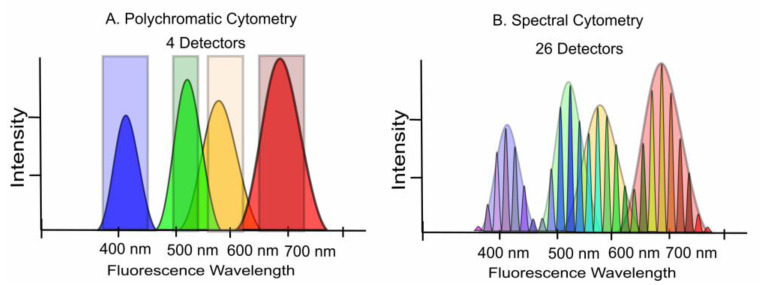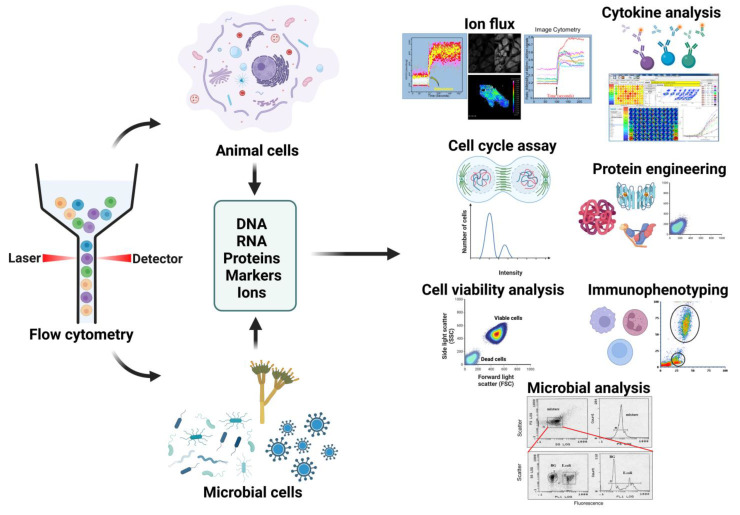Traditional flow cytometry has been instrumental in analyzing immune cell populations.However, its capabilities were often limited by the number of parameters that could be simultaneously assessed due to spectral overlap of fluorochromes.Recent developments have addressed these limitations, introducing techniques that allow for high-dimensional analysis of immune cells.
Spectral Flow Cytometry
Spectral flow cytometry utilizes a continuous range of wavelengths to detect fluorescence emissions, enabling the simultaneous measurement of more parameters without the constraints of traditional flow cytometry. This advancement allows for a more detailed characterization of immune cell subsets and their functional states .pmc.ncbi.nlm.nih.govfrontiersin.org

Mass Cytometry (CyTOF)
Mass cytometry, or CyTOF, integrates time-of-flight mass spectrometry with flow cytometry. By using metal-tagged antibodies, CyTOF can analyze over 40 parameters per cell, providing a comprehensive view of immune cell phenotypes and functions. This technique has been particularly valuable in cancer immunotherapy research, where understanding the tumor microenvironment is crucial .en.wikipedia.org

Imaging Mass Cytometry (IMC)
IMC combines mass cytometry with imaging techniques, allowing for the spatial mapping of immune cells within tissue sections. This approach provides insights into the localization and interactions of immune cells in their native tissue context, enhancing our understanding of immune responses in diseases such as cancer and autoimmune disorders .en.wikipedia.org


